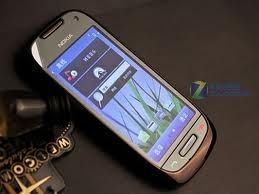People have always—and yes, we meanalways—told stories, from pictures on cavewalls to oral stories, written text, photoalbums, movies, and now multimedia. Oftenthese stories span many events and includemany people. This requires collecting datarelated to those events and then editing it forpresentation based on the intended audience.Because creating stories takes time, people haveusually only done this for important topics.Recently, however, that idea is being challenged.Current Internet technology makes it easierfor people to share small bits of informationwith others in their (social) network. Threethings facilitated this change: ubiquitous network connectivity; a critical mass—enough people are part ofthe network that the updates capture the attentionof others; and new types of devices that make it easy forpeople to capture content.We call this new form of blogging a micro blog, arepository for a bit of information about differenttypes of events. Figure 1 shows a lightheartedview of the types of text-based microblogs. Multimedia data is providing even moreinteresting forms of micro blogging.The different types of events captured bymicro blogs could include an article read or apersonal event such as a party, meeting, or anythingthat happened to the creator/user. Microblogs became popular because they gave peoplea mechanism for spontaneously sharing theirexperiences or opinions. Initially, this wasdone using text, but new technologies areencouraging people to share media such asphotos, videos, and location data.Micro stories take many forms, ranging fromtext to audio, visual, location, emotional state,and anything else people consider important. Ifwe think about status updates and the similartypes of postings listed in Figure 1, it is clearthat people want to share simple events andwant to do it spontaneously with the littleeffort, or using a current popular term, withno friction. Status updates and their variantsprovide early tools for spontaneous microstorytelling related to an event.The cell phone camera was the first sensor torevolutionize the sharing of micro experiences.Visual stories became popular as photo sharingbecame a major craze. We can see an increasein the number of photos being uploaded toshare events. The rise of Instagram, Path, TinyReview, Erly, and numerous others—too manyto mention—demonstrates that people like toshare visual moments. Video is not that popularyet, but it is likely to become more popularas storage and bandwidth become less expensive.(Arguably, picture postcards might havebeen the first micro stories. Buy a card, scribblea couple of sentences, and send it off. But theyare hard to aggregate into a mega story.)The second sensor to bring a new dimensionto storytelling was GPS. Many small, and evensome major, companies are involved in microstorytelling using user locations. FourSquarewill let you capture your location and share itwith your experiences and recommendations.Despite expressed privacy and security concerns,the use of location-based check-ins andservices keeps increasing.A micro story might involve only a singleclick of the ‘‘like’’ button or a camera shutter,but it implies much more than just one bit ofinformation for two reasons: context andhuman intelligence. Context for this single bitis important because some ‘‘bits’’ are more valuablethan others. For example, the news thatMarc is at Gate 12 is not significant becausehe practically lives at the airport, travelling frequently.But if Mary announces the sameevent, we might take notice because she hatesto travel. Second, an ensemble of even singlebits tells me something about human behavior.For instance, a lot of clapping tells me a songmeant something to the audience. This isa human signal that is hard to extract frommultimedia content.1For space reasons, we will not discuss anyother sensors here, such as those used forhealthcare, but just point out an intriguingtrend. Early on, we needed to deliberatelytype (or tap) about 100 times on a mobilephone screen. When cameras became common,we captured much information with aclick, and only a few taps were required toshare a story. With location-based stories,we can share the story with photos and just afew taps. This data revolution now allows usto tell richer stories using an order of magnitudefewer taps. The data revolution results inusers capturing experiential data using sensors,making shared experiences richer while the effortinvolved in sharing them has decreasedsignificantly.Using long-form video and audio to tell storiesis difficult, but a short video of the Christmastree falling on Kent’s head is easy tocollect and share. Even the background and environmentalsounds tell a lot about the location.It is only a matter of time before wehave an Instagram for video or people start totweet videos instead of just links.Micro stories reflect a person’s experiencewith just one small event—really a momentin the event. In fact, many moments from thesame event could be shared in more detail. Itthen might become a regular event story, ratherthan a micro story. A micro story, which is relatedto how important the experiencer considersthe experience of a moment and its context,reflects more on the importance we gives to thesharing than the event. In fact, a user mayshare a micro story with one user and share amuch longer event story with another user.This emerging form of the story is datadriven. It uses metadata and data intentionally,consciously captured by a person who mighthave collected it for personal use but then decidedto share the experience with others. Obviously,every story helps share experiences. Thatmeans that the storyteller customizes the experiencesto be included in the story based on hisor her knowledge of the interests of those‘‘listening.’’

NOW THESE DAYS
Posted on at



